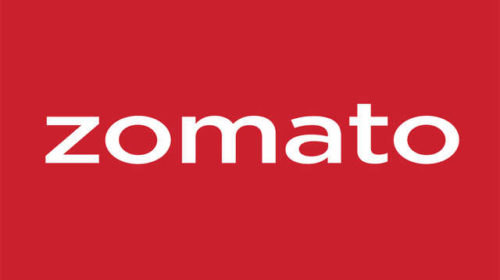Zomato is an Indian restaurant search and discovery service founded in 2008 by Deepinder Goyal and Pankaj Chaddah. It currently operates in 24 countries. It provides information and reviews of restaurants, including images of menus where the restaurant does not have its own website and also online delivery. The restaurant search and discovery platform began its operations under the name, Foodiebay. In November 2010, the brand was renamed as Zomato.
The idea of Zomato had initially came into the existence in a food hub of management consultancy.The cofounders Pankaj chadda and deepinder goyal worked in this consultancy.They constantly saw people waiting in the long queuesfor hours in the food court, but weren’t able to see the menu card. That helped them in getting an Idea. They decide to solve this problem,hence reducing the time to wait for food.
At the beginning of their journey they acquired menu-mania (New Zealand based company) in 2008 and went on acquiring Lunchtime.cz and Obedovat.sk. Within the same year they got Gastronauci, an european company under their control. To make their presence in Australia, USA and canada, they acquired Urbanspoon.
By 2011, Zomato launched in Delhi NCR, Mumbai, Bangalore, Chennai, Pune and Kolkata.With the introduction of .xxx domains in 2011, Zomato also launched zomato.xxx, a site dedicated to food porn. The company launched a print version of the website content named, “Citibank Zomato Restaurant Guide”, in collaboration with Citibank in May 2012, but it has since been discontinued.
As funding started picking up the pace in 2010, Zomato’s presence across Indiadid too. By 2011 the company after establishing a monopoly in Delhi NCR moved to cities like Pune, Bangalore, Chennai, Hyderabad, and Ahmadabad.
It kept pace with the smartphone boom too, by introducing its mobile app at this point in time. The company in order to keep up with its hip brand image and humor its audiences launched a .xxx domain which had pictures strictly dedicated to food porn.
By 2012, overseas operations of Zomato started operating in full gear with the UAE, Sri Lanka, Qatar, United Kingdom, Philippines, and South Africa becoming a
part of its user base. In 2013, countries like Turkey, Brazil, and New Zealand were also added to the list.
While its expansion was happening in full force, Zomato also started acquiring foreign-based companies to maximize its business. In 2013 it acquired Portuguese company Gastronauci and the Italian service Cibando. A big acquisition came in when they got a hold of the American service called NexTable which catapultedZomato into the US market’s competition.
In September 2012, Zomato expanded overseas to the United Arab Emirates, Sri Lanka, Qatar, the United Kingdom, the Philippines, and South Africa. In 2013, the company launched in New Zealand, Turkey, Brazil and Indonesia with its website and apps available in Turkish, Brazilian Portuguese, Indonesian and English.
In April 2014, Zomato launched its services in Portugal, followed by launches in Canada,Lebanon and Ireland the same year.The acquisition of Seattle-based food portal Urbanspoon marked the firm’s entry into the United States, Canada and Australia, and brought it into direct competition with Yelp, Zagat and OpenTable.
In January 2015, they also had taken control of a Turkish firm Mekanist. Followingthis Delhi’s MapleGraph got acquired by them ,as a result the product MaplePOS is referred as ‘Zomato Base’. The next one to be acquired was a US portalNexTable and so on.
In February 2017, Zomato in a company’s blog, explained the concept of cloud kitchen. With its cloud kitchen, the company will help the restaurants to expand their presence without incurring any fixed costs.
In September 2017, Zomato claimed that the company had “turned profitable” in the 24 countries it currently operates in. Furthermore, Zomato announced that the “zero commission model” is to be introduced for partner restaurants.
Towards the end of 2017 Zomato stopped accepting updates from it’s active users, it appears this includes no longer utiliting moderators to verify and make updates from users. Restaurant information is not being kept up to date, this includes not adding new restaurants nor removing closed locations. The aspects
that helped them directly compete with Yelp and Google, including reviews and images, have become obsolete. Most new users of the app are reporting issues with the new feature to pay for orders. The app is being updated only to keep working with newer operating systems.
Zomato narrowed down its losses by 34% to ₹389 Cr for the financial year 2016–17, from ₹590.1 Cr crore[clarification needed] in the previous year 2015-16.
Between 2010-13, Zomato raised approximately US$16.7 million from Info Edge India, giving them a 57.9% stake in Zomato. In November 2013, it raised an additional US$37 million from Sequoia Capital and Info Edge India.
As the usage of this Zomato has seen a phenomenal upsurge, the founders of Zomato decided to simplify the access of the application for the users. Then a mobile app was built to benefit the people and to make access easy for the users. However, innovation demanded more funds.
The founder of the notable job search engine Naukri Sanjeev Bikhchandani was fascinated by Zomato, and he started to invest in the project.In 2010, he invested up to US$ 1 million through Info Edge (India). The very following year, the same investors provided them a huge fund of US$ 3.5 million. Next year, a huge amount of US$10 million flooded in from Info Edge. Info Edge now holds more than 50%. Other financiers of this company include Sequoia Capital, Vy Capital, and Temasek.
In November 2014, Zomato completed another round of funding of US$60 million at a post-money valuation of ~US$660 million. This round of funding was being led jointly by Info Edge India and Vy Capital, with participation from Sequoia Capital.
In April 2015, Info Edge India, Vy Capital and Sequoia Capital led another round of funding for US$50 million. This was followed by another US$60 million funding led by Temasek, a Singapore government-owned investment company, along with Vy

